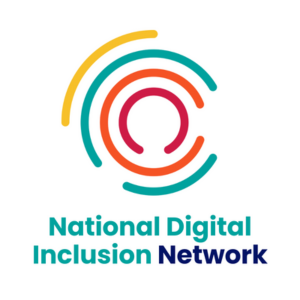Insights
INSIGHTS
All Topics
What makes a successful charity website?
We explore six steps to success for your charity website, from prioritising accessibility to assessing Search Engine Optimisation (SEO)
A charity website can fulfil many purposes, from signposting services to collecting donations. But many working in the charity sector feel their website isn’t living up to its full potential. According to the Charity Digital Skills Report 2023, the top digital priority among charities (79%) is improving their website, online presence, or social media.
So, where to start? In this article, we explore six ways to achieve success with your charity website.
Check out the .ORG Learning Center
Align with your users
To design a successful charity website, consider the intended users and your purpose. By understanding what service users and others will need from your website, you can address these needs straight on.
For example, Refuge’s website includes a “quick exit” button on every page, supporting the privacy of service users who are experiencing domestic abuse.
The Royal National Institute of Blind People (RNIB) includes a “Switch colour mode” button at the top of their website. This enables those with sight impairments to adjust the colour contrast of pages to suit them.
To align your website with its intended users, it’s a good idea to conduct user research. Techniques that could be useful include card sorting, user interviews, user testing, and user personas.
Be accessible
Online accessibility benefits everyone. It means websites can be used regardless of someone’s device, environment, or ability.
In the same way a building without wheelchair ramps can pose barriers,, inaccessible websites can also create barriers. This can impact people’s ability to access essential information and services, feel included in society, and secure education and employment.
Having an accessible website is both a way to uphold inclusion and to welcome as many people as possible to your charity’s work.
Some ways to make your website more accessible are using alternate text, which describes the content of an image or video for people who use screen readers , or making sure it works on mobile devices. The WCAG Introduction to Web Accessibility further explores how to design websites to be perceivable, operable, understandable, and robust.
Build trust
When your website users trust you, it means they can feel safe and respected when interacting with your charity. That is important to the wellbeing of all your stakeholders, as well as encouraging them to interact with you further.
One key to maintaining trust in your website is by staying secure and protecting the data of its’ users. To ensure security for your website, PIR recommends that you find a registrar that offers strong security feature options, such as:
- End user DNSSEC management support
- Privacy/proxy services
- SSL certificates
- Website malware scanner
- Threat monitoring hacker protection
To help you choose, you can check out their list of accredited registrars for the domains .ORG, .CHARITY, .GIVING, and .FOUNDATION.
Other ways to help users feel safe and respected when using your website are being GDPR compliant, practicing transparency, and knowing how to manage cyber security incidents.
Be clear
Having a clear website means it will connect with as many people as possible, as quickly as possible. On the other hand, using unclear language and design can waste visitors’ time and even alienate them from your organisation.
In particular, it’s important to make the charity’s mission and purpose clear. This means that anyone visiting your website can immediately get involved.
Create an easy-to-find “about us” page, which states in simple language, in a sentence or two, what the charity does and why. You may use the Hemingway Editor for help with keeping language simple.
In addition, creating simple user journeys can mean that more visitors will reach their intended destination on your website. Make sure you have clear language and design to help people find out about the services you offer, how they can donate, and even how they can join your team or volunteer.
Know your SEO
Search Engine Optimisation (SEO) is a set of techniques to help your website improve its reach on search engines. This can make your website successful by increasing the number of service users, donors, and others that find out about your charity.
Ways to improve your website’s SEO are using keywords, writing in a clear and engaging way, fixing broken links, using high-quality links, and improving load times.
Keep it fresh
Make sure you keep the information on your website up-to-date and relevant. To do this, you can routinely review whether certain pages are still needed and take them down if necessary. This is most helpful when the information provided has changed.
To keep your website fresh and relevant, you could also host a blog. Charity blogs can be places for service users to share their experiences, to provide resources on charity causes, and keep readers informed about what the charity is doing to achieve its mission.
Multimedia content such as videos, podcasts, and webinars can make your online presence dynamic and engaging. It can also help more people engage with your work in ways that suit their own preferences, broadening your impact.
To find out more about how to grow your online presence , check out the .ORG Learning Center, powered by PIR.org.
Josie Sparling
More on this topic
Recommended Products
Our Events
Q&A session: An introduction to Microsoft Copilot
Join us on the 14th of May for our Q&A session. It will provide a whistlestop tour of Microsoft Copilot’s key capabilities, how they can help charities, and answer all your burning questions around Microsoft’s AI service.
We use cookies so we can provide you with the best online experience. By continuing to browse this site you are agreeing to our use of cookies. Click on the banner to find out more.














